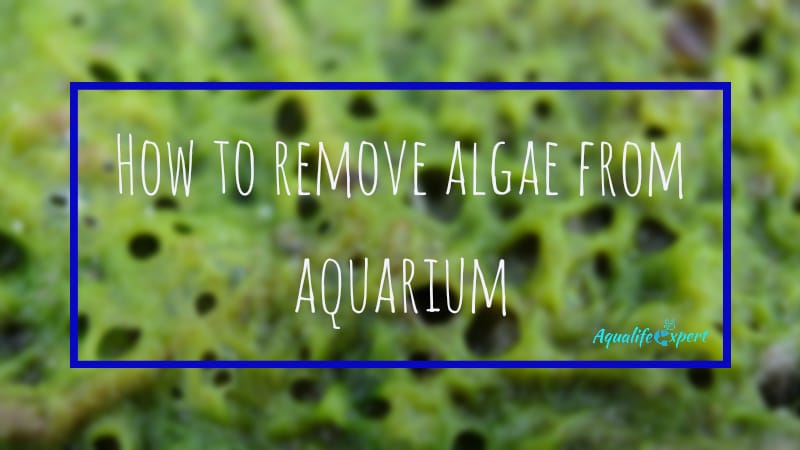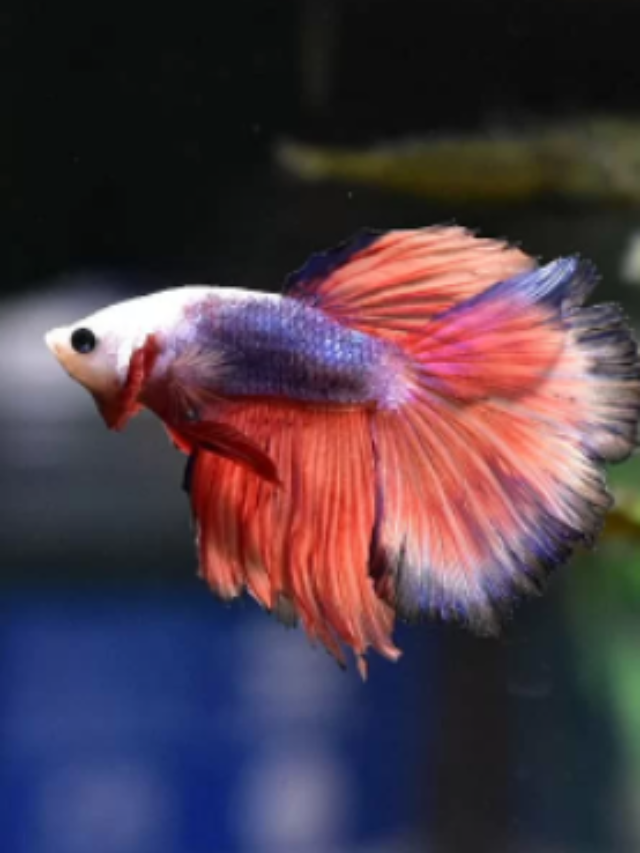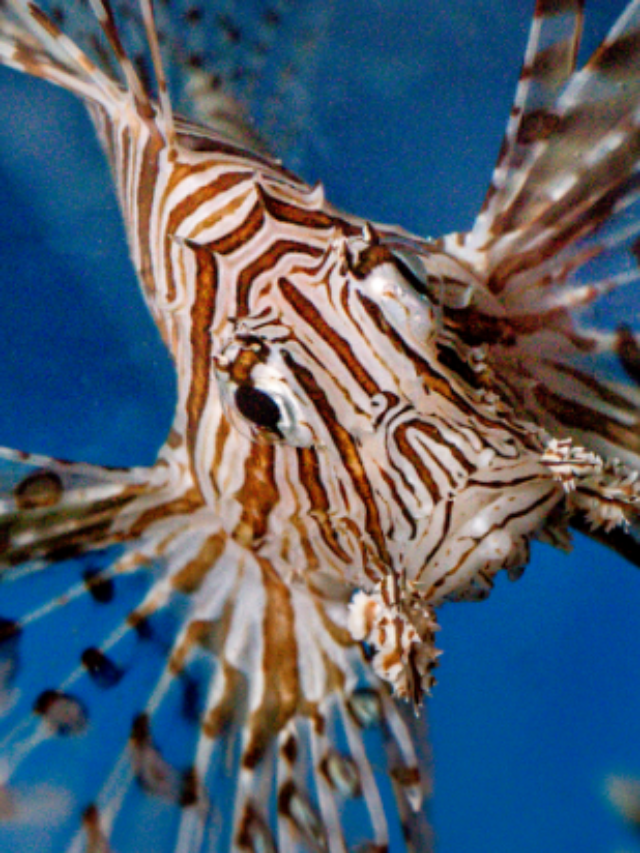How to remove algae from aquarium? Solutions for each type of alga
Check Our Quick Stories
Removing algae from the aquarium is an easy job but not always. Sometimes it will give you serious trouble if you don’t know the processes to remove it from your aquarium. The removal process depends on the types of algae and you must know these.
But still, to remove algae from the aquarium the best thing is the maximum amount of water change (two times 50% each), water circulation (good filter, air stone) and not providing any source of lights to it. Water circulation helps to remove algae. Some algae eaters like pleco, otocinclus, amano shrimp can eat algae also. But for permanent solution of it is to provide 4-5 hours light, proper maintenance with a sponge, scrubbers and blades and not to leave any excess foods in water
But still, you will face lots of problems if you are a new aquarist. Without much experience, it becomes tough to remove all of the algae from the aquarium and ultimately you may leave this beautiful hobby after a while.
That’s why you should know about the types of algae which you may face and their removal process.
Types of algae, cause and its removal process
Type of Algae |
Causes |
Removal Process |
| Rhizoclonium Algae | 1. Low maintenance 2. Low CO2 level |
1. Proper maintenance
2. Add CO2 dosage if required |
| Blue-Green Algae
|
1. Due to high phosphate and nitrate 2. Excessive lights |
1. Cover it up for 3-4 days, then change 20% water
2. Add 200 mg erythromycin per 10 gallon |
| Green Water Algae | 1. Improper nutrient balance
2. Excessive lights |
1. Use a UV sterilizer |
| Green Spot Algae | 1. Low phosphate level
2. Improper maintenance |
1. Use phosphate enriched fertilizer
2. Use a new blade |
| Brown Algae | 1. New aquarium setup
2. Presence of silicate |
1. Use a good scrubber
2. Use siphon vac to remove |
| Black Beard Algae | 1. CO2 fluctuation
2. Comes from an outside source |
1. Use 1 ml H2O2 solution in 500 ml water
2. Cut it off with tools |
-
Rhizoclonium Algae
This is a basic type of algae that you can notice in your aquarium if you do not do proper maintenance. This happens just because of a lack of water circulation and lack of maintenance. Not only just because of low maintenance, it can grow because of low CO2 level also.
This type of algae feels clammy and very much soft. The colour of this type of algae is green or brown. You can see it here and there in the aquarium. But if you have driftwood then you can see it more.
To remove this type of algae you need to focus on the proper fish tank maintenance. Don’t leave any excess foods in the water. Try to change some quantity of water more frequently. If you change water frequently then you will not face this type of algae in your aquarium. You have to check the CO2 level also. If there is any problem then you need to add CO2 to your aquarium.
-
Blue-Green Algae
Blue-green algae is one of the common type of algae which you can see anywhere (commonly in substrate) in the aquarium. This is slimy type greenish algae. This is too common because it grows when the temperature is under 25°C and up to 25°C is ideal temperature of most of the fishes so almost all aquarists keep their temperature of aquarium under 25°C.
But not only just because of temperature, this blooms because of imbalance of nutrients in water. When phosphates and nitrates levels rise in the water column then the chances of blue-green algae bloom increase. Another thing is that blue-green algae bloom when it gets limitless light source. So that is another point why it grows too much
Now it times to remove it from your aquarium. Right? To remove blue-green algae you can apply some remedies which I’m going to mention.
1st you need to change the partial water change. 20% of whole water should be changed first. After that cover it up fully for 3-4 days so that lights can’t enter in that aquarium somehow. At the fifth day after removing the cover, change the water partially again of aquarium.
After that step clean the glass and substrate of aquarium with a good scrubber and a vacuum cleaner. You can check the nutrients level by don’t providing any excess foods to fishes. Lastly you can add 200 mg erythromycin per 10 gallon of your tank which will work better to remove blue-green algae.
But you must know that this is such an algae which grows quickly again after its removal. So the permanent solution isn’t there once it gets you. But after its removal you have to maintain your tank well if you don’t want to get blue-green algae bloom.
Do you want to get rid of red algae bloom? then go here
-
Green Water Algae
Do you heard about phytoplankton? This is a single cell of plants. This can run photosynthesis like plants. But this can come to you as algae in your aquarium also. When millions of phytoplankton combines with each other, then that is called algae bloom. When this bloom happens then the water become green and that looks like “pea soup”
This algae bloom also occurs just because of excessive lights, improper nutrient balance and poor maintenance. You have to remember that almost all types of alga loves lights and when it gets lights then it starts growing. So don’t keep your lights turn on for light period of time. Try to turn off lights after 6 hours if your aquarium is not planted but for planted aquarium light should be turned on for 8-12 hours. Don’t turn on lights during day time.
Another thing is improper nutrient balance. As an aquarist you must need to focus on maintenance. Anyone can make aquarium but due to lack of maintenance algae bloom occurs. Try to clean waste and excess foods from water column. Otherwise it will help to increase the nitrate and phosphate level. So try to check your water once in a week. You can use reverse osmosis if your tap water contains higher phosphate or nitrate level.
One thing you must remember that a well-planted aquarium faces this type of problem very little because planted aquarium uses the same nutrients which alga uses. So plants will not allow using the same nutrients to grow its competitors. Floating plants and don’t allow excess lights to penetrate into the deep of the water. So overall planted aquarium is much better to prevent green water algae growth.
But to remove green water algae you must need UV sterilizer. You can install this UV sterilizer. After installing it water will pass through it and all phytoplankton will be removed with other harmful microbes. But the best thing is that it will not affect fishes or plants in aquarium. That is why this is best. Another special thing is that UV sterilizer prevents to grow phytoplankton again in aquarium. So this is worthy enough to remove green water algae from aquarium.
Let me know Are algae really bad for your aquarium?
-
Green Spot Algae
Green spot alga is another type of algae which you can find on the aquarium glass wall. This is very basic type of algae. Almost all aquarists can see this during their fish keeping period. When this algae blooms then any type of hard materials in aquarium specially glass get affected by it. You can see green bright spots all over in the hard materials. This reduces the clarity and the looks of aquarium. So you need to remove from your aquarium as soon as possible.
Before jump into the removal process you should know why green spot algae bloom occurs in aquarium.
Basically due to excessive light and improper nutrient balance is the main cause of it. But for this algae low and high phosphate level both are the reason. That’s why you need to water check regularly. If you see that the water contains a low phosphate level then you can add a fertilizer that is enriched by phosphate and if you see that water contains a high phosphate level then a large water change may solve your problem. Here high phosphate level means 3mg per liter of water.
So now it’s time to give you some solutions about the green spot algae removal. The removal process of green spot algae is quite simple. You don’t need to buy any chemicals or something like that. If you have sponge or a good scrubber then that is enough to remove green spot algae from your aquarium.
You can use vacuum cleaner also to remove it but the best way to remove this algae is to use a new blade. Just take a blade and rub it against the hard surface or glass where green spot algae have been spotted. The algae will remove automatically.
After removal of this algae try to change the water part by part. But don’t try to use an old blade which has rust or something like that. All-time try to use a new blade and before using it try to wipe it up with a clean cloth.
Read more:- How Many Algae Eaters For Fish Tank: 5, 20, 55, 60g & More
-
Brown Algae
Brown alga is another type of algae which can be found in the new aquarium. If you start a new aquarium then lots of thing will happen at early stage of it. Brown algae are one of these things.
You must know that brown algae are not the cell of plants. The cell of this alga is called diatom. This is microscopic and when millions of single-cell combine with each other then brown algae forms. At that time aquarists see it as brown spots here and there on the hard materials as glass, substrate, plants, driftwood etc.
But don’t worry of it because this will not harm your fish. Instead of harming this helps to create a healthy environment inside of aquarium. This helps to oxygenate the aquarium water by releasing oxygen in tank. But for plants this is harmful in a passive way because for plants this becomes competitors to take nutrients to grow.
Little bit brown algae are good but when it covers all over the plants then it prevent to take nutrients from water and gradually plants die.
The main cause of appearance of brown algae is the presence of silicate in water. This silicate may come from bad substrate or water. So don’t forget to read this article about choosing right substrate for planted aquarium, if you are planning to make a new one. Not only silicate, brown algae can occur by improper nitrate balance also.
Removal process of these brown algae is quite simple. So you don’t need to worry about it much. Just take a brush or scrubber and wipe it up gently. This is not so stubborn so you can easily clean it up with good scrubber. But if brown algae layer occurs on gravel substrate then you should use a good aquarium gravel cleaner which will clean only the top of the gravel. But if you have coarse gravels as substrate then it’s better to clean individually by taking it away.
-
Black Beard Algae
If you want to know about the most difficult type of algae then you should know about the black beard algae. This is slimy type algae. It seems like beard and its color is black. That’s why the name of this type of algae is black beard algae.
No one can tell exactly why it grows or where it comes from. But once your aquarium have faced it then it becomes very tough to remove fully. So you should be very careful if you don’t want to get destroyed by it.
Researchers have researched on it and according to them this type of algae comes from outside of the tank. When aquarists like you buy plants or fishes from shop then these things carry black beard algae with it and after a while it spread in the whole aquarium.
But there are some internal reasons also. Among these reasons CO2 fluctuation is the main cause of it. If you can’t able to maintain proper CO2 dosage at your aquarium then it may lead to grow black beard algae. Another reason may be the less water circulation. At your aquarium there may be some spots where water circulation can’t happen freely due to some obstacles. Those spots are called dead spots. Black beard algae can grow at those dead spots in aquarium.
Another thing is that don’t put slow-growing aquatic plants like Anubias under the high intensity of light. Black beard algae will grow and cover it up very quickly. So try to keep this type of slow-growing plant under some shaded places.
Now it’s time to remove this alga.
There are some ways to remove this algae but those are not so useful because in this ways your plants will be damaged also.
One of the safest ways to remove this alga is to cut it off by scissors or anything like that. But in this way you can’t remove it completely. After a while it will grow again after cutting if off fully but through this way none of your plants will die.
Another way is to apply H2O2 solution in your aquarium water. But this solution will damage some of your plants like Jungle Val. So if you created planted aquarium with Jungle Val then you should not go for this method to remove black beard algae.
The tissue of Jungle Val is so sensitive and it H2O2 solution enters it easily and this plant turns to be pale and white after 2-3 days. But if you want to kill black beard algae permanently then you should apply this solution.
According to research 1 ml H2O2 (6%), the solution should add with 500 ml water to remove black beard algae completely without damaging any plants or fishes.
Now if you have a 5-gallon tank then you have 18925 ml (1 gal = 3785ml) of water in it and according to that measurement, you should add 37 ml H2O2 solution. But you should take it with syringe and apply it at the right spot. This treatment is called spot treatment.
The minimum 2-3 days are needed to kill black beard algae completely. This type of algae turns to be green in color when it will die. So be patience and do it correctly.
How to maintain aquarium after removal of algae from it?
Algae can come back again to your aquarium after its complete removal and turn all of your efforts into wastage. So be careful also after its removal process. You must take some precautions. These precautions are same useful for those who don’t have faced it yet according to source.
-
Don’t provide excess food to fish
New aquarists think that fishes are hungry all the time. But that is not the case. You should give food 3-4 times a day depending on your fish size and type. Now if you provide excess foods to fishes then foods will float all over in the water column and it will increase the nutrient level of water. Phosphate level and nitrate level increase due to this incident and this nutrient imbalance leads to algae bloom.
-
Set the timing of lights
Excess lights are very much suitable for algae bloom. So if you turn on lights for longer period of time then algae will grow quickly. Try not to keep your aquarium under direct sunlight. You should know that aquarium fishes don’t need much light to survive. Fishes can live happily without much light but if you have plants in aquarium then it needs light to do photosynthesis. For this issue you can turn on lights for 6-8 hours. This is enough for aquatic plants.
-
Keep algae eater fishes
Some fishes eat algae and you should use this type of fishes to prevent algae bloom. These fishes are otocinclus catfish, twig catfish, cherry shrimp, amino shrimp, Chinese algae eater etc. these fishes keep your aquarium clean and healthy. So try to keep any of these fishes in aquarium to prevent algae growth.
-
Try to change water frequently
Weekly 5-20% water change is mandatory to keep your aquarium healthy and safe. Frequent water change will help to decrease the nitrate level of water column and this will help to prevent the algae growth. Not only that, this will help to clean other hazardous materials also in aquarium which accelerate algae growth passively.
Read more:- How to make community fish tank? With full cost analysis
Final thoughts
One thing you must remember that algae is not your enemy. This helps to maintain a healthy eco-system in aquarium. But as prevention is better than cure that’s why you must take some precautions to prevent algae bloom which is harmful for aquarium.
Here I’ve mentioned some types of algae and its removal process. If you have faced these algae then definitely these methods will work if you apply it properly. Don’t get panic by it. Algae can be removed easily but you must maintain your aquarium well otherwise it will come again and again.
So best of luck & happy fishkeeping 🐟






